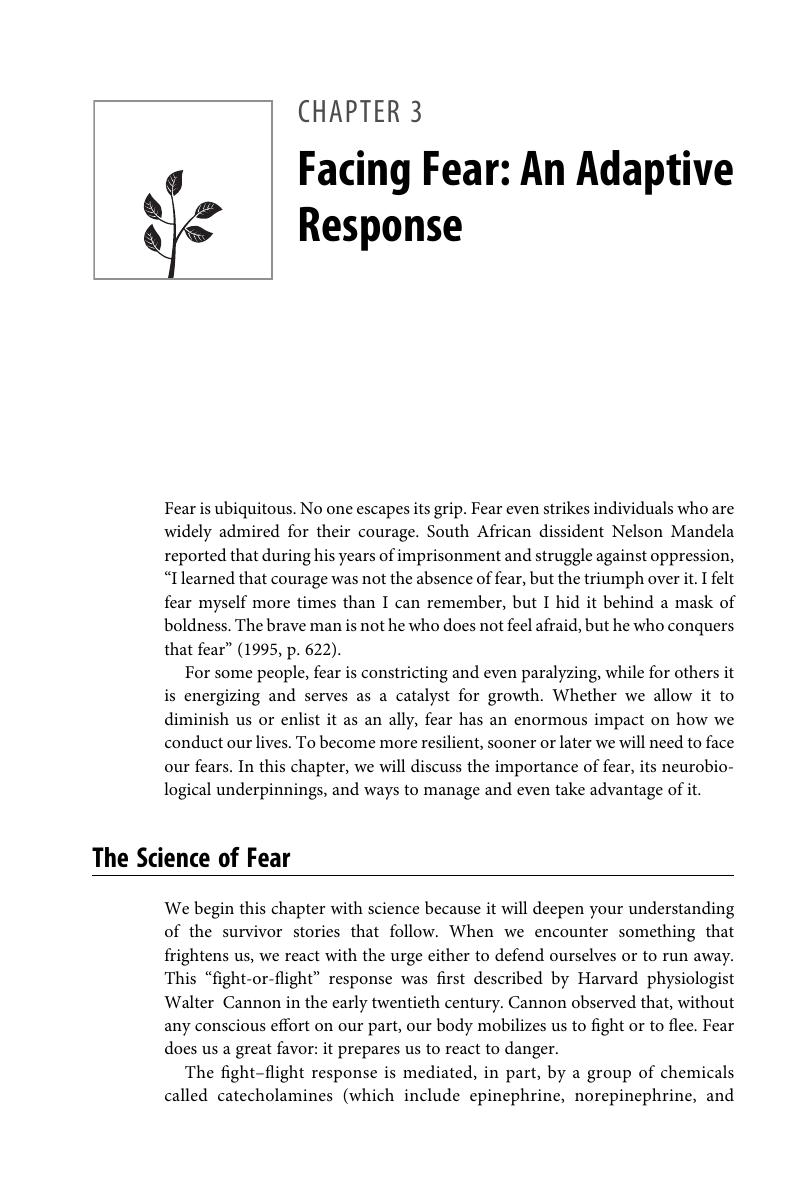Book contents
- Resilience
- Reviews
- Resilience
- Copyright page
- Contents
- Preface
- Acknowledgments
- Chapter 1 What Is Resilience?
- Chapter 2 Optimism: Belief in a Brighter Future
- Chapter 3 Facing Fear: An Adaptive Response
- Chapter 4 Moral Compass, Ethics, and Altruism: Doing What Is Right
- Chapter 5 Religion and Spirituality: Drawing on Faith
- Chapter 6 Social Support: Learning the Tap Code
- Chapter 7 Role Models: Providing the Road Map
- Chapter 8 Training: Physical Fitness and Strengthening
- Chapter 9 Brain Fitness: Challenge Your Mind and Heart
- Chapter 10 Cognitive and Emotional Flexibility
- Chapter 11 Meaning, Purpose, and Growth
- Chapter 12 The Practice of Resilience
- Appendix 1 Further Information About Posttraumatic Stress Disorder
- Appendix 2 Community Resilience
- Index
- References
Chapter 3 - Facing Fear: An Adaptive Response
Published online by Cambridge University Press: 20 April 2018
- Resilience
- Reviews
- Resilience
- Copyright page
- Contents
- Preface
- Acknowledgments
- Chapter 1 What Is Resilience?
- Chapter 2 Optimism: Belief in a Brighter Future
- Chapter 3 Facing Fear: An Adaptive Response
- Chapter 4 Moral Compass, Ethics, and Altruism: Doing What Is Right
- Chapter 5 Religion and Spirituality: Drawing on Faith
- Chapter 6 Social Support: Learning the Tap Code
- Chapter 7 Role Models: Providing the Road Map
- Chapter 8 Training: Physical Fitness and Strengthening
- Chapter 9 Brain Fitness: Challenge Your Mind and Heart
- Chapter 10 Cognitive and Emotional Flexibility
- Chapter 11 Meaning, Purpose, and Growth
- Chapter 12 The Practice of Resilience
- Appendix 1 Further Information About Posttraumatic Stress Disorder
- Appendix 2 Community Resilience
- Index
- References
Summary

- Type
- Chapter
- Information
- ResilienceThe Science of Mastering Life's Greatest Challenges, pp. 63 - 84Publisher: Cambridge University PressPrint publication year: 2018



